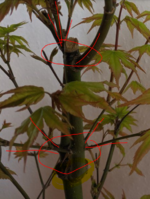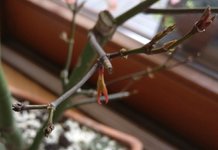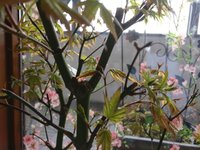ajm55555
Chumono
- Messages
- 693
- Reaction score
- 570
- USDA Zone
- 7b
So I have this Japanese maple, which I cut back hard in the Fall of 2019. It's a garden center tree at the beginning of its bonsai life.
It's waking up now and I have a few apical shoots that are very strong, while others down below are weak and maybe on the verge of drying up. I guess it's possible that they'll come back stronger once the energy gets more evenly distributed.
I know you pinch as refinement but I was wondering if pinching those strong ones would help the ones at the bottom to get some energy earlier or before it's too late.
Thanks for your tips.
Some of the strong ones. There are more up above.
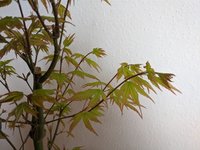
Some of the weak ones. They're not all weak but definitely weaker in general ans some are kind of black even if not dead.
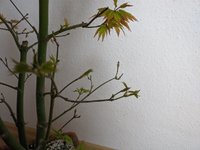
It's waking up now and I have a few apical shoots that are very strong, while others down below are weak and maybe on the verge of drying up. I guess it's possible that they'll come back stronger once the energy gets more evenly distributed.
I know you pinch as refinement but I was wondering if pinching those strong ones would help the ones at the bottom to get some energy earlier or before it's too late.
Thanks for your tips.
Some of the strong ones. There are more up above.

Some of the weak ones. They're not all weak but definitely weaker in general ans some are kind of black even if not dead.


